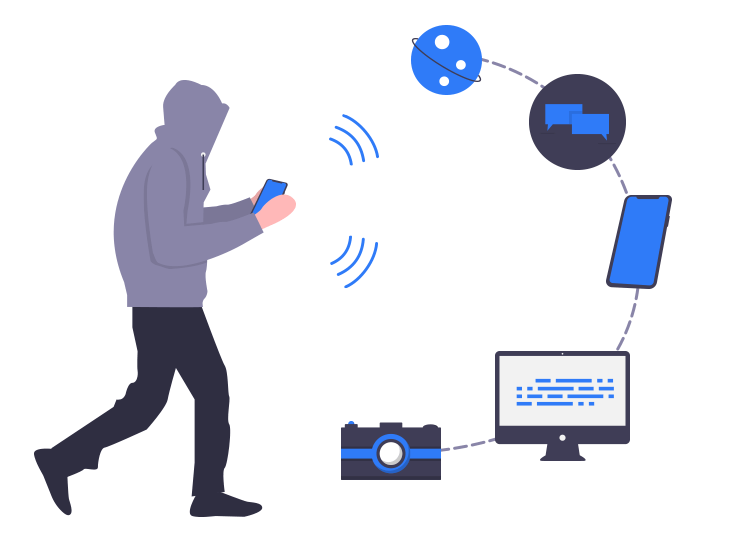
The Internet of Things (IoT) has connected the world today in a smarter way and revolutionized all sectors of businesses and impacted most sectors of livelihood in a beneficial manner. On the other hand, cybersecurity threats have also increased exponentially because of the same reason, so, how can we prevent Internet of Things (IoT) attacks?
As we are aware of Newton’s Third Law of motion, “Every action has an equal and opposite reaction,” in a similar manner, the Internet of Things (IoT) can’t simply exist without having negative implications.
Today, the Internet is everywhere and similarly the risk of exposure, data and identity theft and hacking looms everywhere. Hackers and government organizations use vulnerabilities in IoT devices to gain access to a network, monitor users, gain access to connected devices for exploitation, information collection purposes, etc.
How does the IoT influence security?
The characteristics that the IoT systems possess, making it a bigger threat for users, are:
- Gathering of abundant data by IoT sensors and devices.
- Creation of complex environments between connected devices and networks.
- Connection of virtual and physical environments.
- Centralization of architecture which leads to data collection by each device and its communication to the base station via a sensor.
What are IoT attack surface areas?
The IoT attack surface is the summation of the potential security vulnerabilities in IoT devices, associated software and infrastructure of a given network (local or the full Internet). The attack surface areas include the following:
- Devices – Vulnerabilities arise from memory, firmware, physical interface, web interface, network services, default user settings, outdated components, etc.
- Communication channels – Protocols in IoT systems having security loopholes.
- Applications and software – Vulnerabilities in web apps.
How can you secure the IoT devices from attacks?
Not only security but prevention should be the goal for everyone when it comes to safeguarding the IoT. Security should be considered from the design phase, integrating it in every aspect of the system.
Below are some security guidelines that can be effectively applied to secure IoT:
- The entire data that is being circulated within the IoT system and is being collected should be mapped appropriately.
- Devices should be configured accordingly, prioritizing security essentially. Recommended use of strong usernames, complex and unique passwords, multi-factor authentication, and encryption is essential.
- Each and every device should be physically secured with the use of locks and passwords, antivirus solutions, keeping them physically secure, etc.
- The security strategy of the organization should be designed and established on the assumption of compromise.
- It is also essential to conduct cybersecurity awareness sessions to make everyone aware of the emerging trends of cyber exploitation techniques, and informing them about user best practices and safety tips.
Thus, you now have a brief idea about IoT device attacks and how you can be safe.

